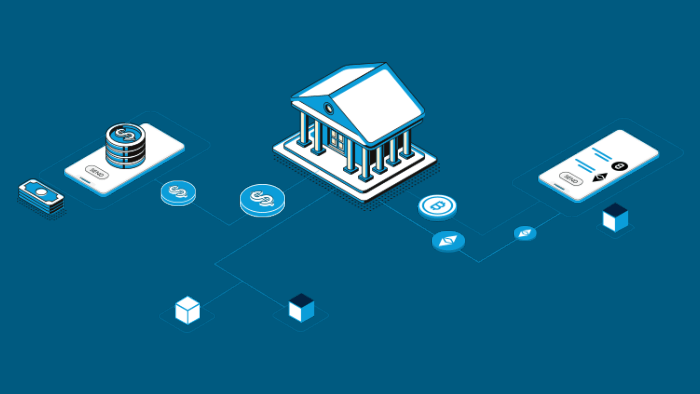Financial technology has witnessed accelerated innovations in reach and mechanisms for the past decade. Tech-driven start-ups are emerging and persisting in maturing for innovation and building collaborations for investment opportunities. However, the most significant obstacle financial technology faces are the collaboration between traditional offline banks, which control most financial resources and infrastructure.
As the financial industry looks at the onset of the digital era and ushers in the era of online payments, the collaboration will become one of the industry’s turning corners and pinch points. According to Denise Leonhard, head of global credit expansion, the payment system is based upon the fragile partnership of digital banks and online payment systems. She said that this collaboration is a messy soup.
From the financial crisis of 2008 to 2009, the banking system rose from the ashes, and the financial tech industry grew. Online banks have yet to be able to replace traditional banks, but they are highly pervasive in developed and some emerging markets.
History of Banking: The Beginning of the Banking Era

The earliest forms of banking started with a prototype in the Assyrian empire and India in 2000 BC. Later in the Greek civilization and Roman Empire, the bank was based in temples that used to give out loans to the common masses. However, the modern banking system emerged during the Renaissance in Italy and eventually spread across Europe. The immediate emergence happened in cities like Venice, Florence, and Genoa.
The powerful families and nobility had control of the substantial wealth of the country, which went into business investment during the age of exploration. During the 14th century, Bardi and Peruzzi dominated the financial sector back in the 14th century. The largest bank was under the Medici family, founded by Giovanni in 1397. The development of the modern banking system would eventually spread across the Holy Roman Empire throughout the 15th and 16th centuries.
During the 17th and 18th centuries, court Jews began lending money to Christian families. Subsequently, the Jews became the thriving banking community and dominated the banking industry to the point that they became stereotyped with the profession.
Kings appointed numerous Jews to positions of significant power in state finance, such as tax collectors, masters of the mint, and tax farming. Court Jews had competent administrative skills, were merchants and business people, and were heavily in demand in countries like Denmark, Hungary, Italy, and Portugal.
The modern banking system took a familiar form during the industrial revolution in England. During the age of exploration, banknotes were emerging. Wealthy business people and merchants started depositing gold and other valuable substances, such as silver, to banks in exchange for loans.
During the 17th century, after the Dutch invented the share market, investment banks invested in the trading industry. In 1695, the Bank of England was formed and started issuing banknotes, the first of its kind. Initially, the notes were handwritten, ranging from twenty pounds to a thousand pounds.
During the 18th century, governments introduced new banking services like check deposits, overdraft protections, and security clearances. The Parisian bankers dominated the banking system during and after the Napoleonic Wars. The 19th and 20th centuries saw the rise of many modern banks as we know and use them today.
From Disruption to Collaboration
Fintech combines financial and technology words that rose during the early 21st century with the ushering of the digital age. The fintech industry mainly comprises the banking services made available through the Internet. The bank account holder stores, receive and sends money from one account to another by writing a check or visiting a physical bank branch. Everything from keeping a tab on your financing and transaction with the click of a screen to depositing checks with the click of a picture is all part of the innovation of the fintech industry.
With traditional banking dominating the scene for almost three centuries, the fintech industry became the tidal wave of disruptive force that looked to redefine banking and do away with the constraints of physical banking. However, the relationship between traditional banks and online banking tech has evolved from competition and collaboration. The framework for collaborating between Fintech and traditional banking involves establishing strong alignment and common ground.
The financial institution has to adapt its business model from product-centric to customer-centric. Traditional banking institutions have taken advantage of their monopoly and have imposed strict rules upon the account holders, over-burdening them with fees with no relevance. Multiple forces have constantly challenged traditional banking to move toward customer well-being or wellness of the bank account holder.
Customers are becoming habituated to keeping tabs on their transactions and having access to these transactions 24×7. There has been advancement in cloud technology. Advanced cloud technology helps in clearing transactions in real time and instantly. It also secures your transactions from being stolen or leaked. The innovation of smartphones also helped the digital transition of the banking system from physical banks to the customer’s pockets.
Fintech companies had the challenge to overcome. Traditional banks control assets and resources far more significantly than their own. Fintech is rapidly evolving to give customers a personalized experience. Traditional banking has yet to be able to develop or innovate.
Moreover, there’s the entire topic of financial inclusion as well. Traditional banking is restrained by its physicality and cannot be pervasive enough in areas lacking the infrastructure to support offline branches. Fintech companies can permeate these areas and deliver without physical branches. Recent studies have women are more likely to be financially excluded. So, can bank accounts save women’s lives violence against women, and financial inclusion?
However, despite its growing popularity and apparent advantages, fintech needs help to get and expand a firm user base and expand them. Customers are willing to continue committing to their long-standing relationship with traditional banking. At the same time, they want these institutions to modernize and deliver the latest facilities to them. Fintechs are not the ones to back down.
They are constantly developing and innovating to introduce new features to add value to their customers’ lives. Eventually, both industries will collide as they grapple for a larger market share. But the partnership is happening not only with banks but also with mobile network companies, with mobile money’s newest outpost spreading across Africa.
The Benefits of Fintech Partnerships

Since the internet has taken over the world, the partnership between traditional banking and fintech has become apparent. According to surveys of financial leaders and banking executives, 82% agree that partnerships between fintech and traditional banks can positively impact the banking structure. Brand reputation had increased by 36%, and mobile banking functions had increased by 56%. Increasing youth financial inclusion can also be an objective as Credit Suisse sponsored event focuses on financial capability and the policy and business case for youth financial inclusion.
It has also found approval among the young generation, as the reach towards people below 24 years has increased by 11%.
As we can see, the partnership between fintech and traditional banks has:
- The ability to innovate their facilities and create a stable structure for future innovation is better.
- For persistent customer engagement through new features and digital convenience.
- Rapid improvement and development of the product and the facilities through customer feedback.
Digital banking, over the years, has been able to minimize risk and bolster encryption by implementing new verification and safety measure to protect your money and sensitive data.
Financial technology companies have also benefited from the partnership of traditional banking by:
- Offering exposure to a large number of fixed valuable clients.
- Improving performance by letting more experienced personnel take over operations
- Increasing chances of stable and profitable scalability.
Using the traditional bank’s incredible hold on resources and assets, the fintech can scale and expose themselves to valuable high-net-worth individuals for revenue growth and to establish a reputation in the industry for future connections and influence. Traditional banks and fintech partnerships can also benefit from financial inclusion like microfinance for all in the wake of typhoon Haiyan.
Framework of Banks and Fintech Partnership
Despite undeniable advantages, not all partnerships between banks and fintech yield results, and therefore can be harmful. Incompatible partnerships can lead to lackluster communications and the downfall of service quality and revenues. There are no cardinal rules or one-size-fits strategy that lead to a healthy business partnership. There are also other issues.
Despite effective cost reduction, available latest technology, and all the data and computation resources, nothing can overshadow that fintech is still nascent. Fintech lacks mass appeal and has a broad infrastructure requirement that will make it adhere to the ordinary people.
Also, even if the data leaks and lack of encryption have reduced significantly over the years, it hasn’t been eliminated. Stability is also one of the critical issues. Market instability can make the system fragile, and the collapse of one institution can have a domino effect on other companies. Digital transformation also increases the risk of security threats.
Partnerships with traditional banks and fintech are only beneficial if only:
- The partnership goals are strategically aligned with each other.
- The common ground is established.
- Scalability is possible with the partnership.
Frequently Asked Questions (FAQs)
Q1. How are banks partnering with fintech?
Traditional banking found it beneficial to partner with fintech to make their banking system efficient and convenient for the customers. The fintech is partnering with banks to gain exposure and reach scalability. A few factors lending to this partnership are establishing common ground and strategic goals.
Q2. What are the standard engagement models in bank fintech partnerships?
Engagement models in bank fintech partnerships can be categorized into five parts:
- Referral Partnership
- Assisted Partnerships on Private Labels
- Private Label Partnerships
- Small business loans
- Debit cards
Q3. What is an advantage banks get when they partner with fintech startups?
The partnership between fintech and traditional banks has:
- They can better innovate their facilities and create a stable structure for future innovation.
- The partnership will have persistent customer engagement through new features and digital convenience.
- Rapid improvement and development of the product and the facilities through customer feedback is possible.
Conclusion
Banks and FinTechs have different reasons and agendas to partner with each other. But only the customer has to gain from all of this. The increased digitization and access to technology have reduced the cost of transactions, account maintenance, and maintaining the banking infrastructure.
The digital banking system has made it easier for the financially excluded to open their bank accounts and participate in the economy. Advances in connectivity have led to customers knowing different financial services and what they want to use. At the same time, providers have information about their customers so they can provide access to their financial services better than their competitors.
Author Profile

- Jonas Taylor is a financial expert and experienced writer with a focus on finance news, accounting software, and related topics. He has a talent for explaining complex financial concepts in an accessible way and has published high-quality content in various publications. He is dedicated to delivering valuable information to readers, staying up-to-date with financial news and trends, and sharing his expertise with others.
Latest entries
 BlogOctober 30, 2023Exposing the Money Myth: Financing Real Estate Deals
BlogOctober 30, 2023Exposing the Money Myth: Financing Real Estate Deals BlogOctober 30, 2023Real Estate Success: Motivation
BlogOctober 30, 2023Real Estate Success: Motivation BlogOctober 28, 2023The Santa Claus Rally
BlogOctober 28, 2023The Santa Claus Rally BlogOctober 28, 2023Build Your Team – the Importance of Networking for Traders
BlogOctober 28, 2023Build Your Team – the Importance of Networking for Traders

